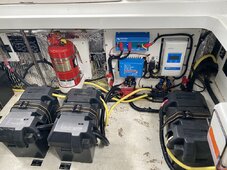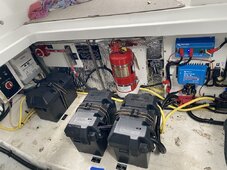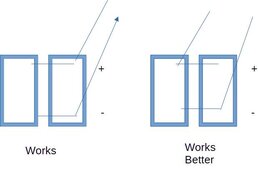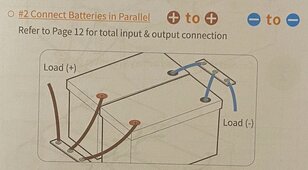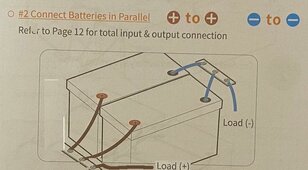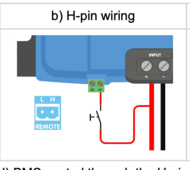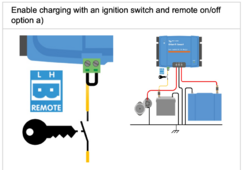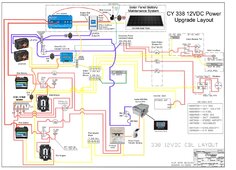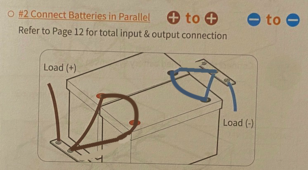A quick update . . .
After some testing and trial operation . . .
The solar charging is working fine. Charging from shore power via the Xantrex Freedom SW 2012 and the ProNautic 1203P are both working fine.
Charging from the engine alternators . . . not so much.
I ran the Port (left) engine for 5-10 minutes. Input voltage to the Orion TR Smart ran a bit high (15.5v according to the iPhone App). The Orion kept going in an out of bulk charging mode . . . every 5-10 seconds. The LFP batteries were resting at about 13.2-13.3 volts. I made a few adjustments to the settings . . ., but it did not change much.
Then I ran the starboard (right) engine. The input voltage to the Orion went even higher 16volts !!!

and fluctuated up and down from about 10 volts to 16 volts. After a few minutes the engine's control system said "I'm out-a here" and threw a critical warning, (setting off one of those annoying buzzers). I shut the engine down. I connected my diagnostic computer (Rinda Diacom) to the engine control system and cleared the fault code (It's a PCM 112 for those up on marine engine controllers). I disabled the Orion via the CB's and re-started the engine. At that point it appeared that the alternator was not charging the starter batteries. (oopppsey . . .

) . . . The engine battery started off at 12.7 volts and went down to 12.3 volts within a few minutes.
So I left the system on solar charging and the batteries all became happy again. I checked a bunch of wiring, focusing on the 2 alternator/3 battery isolator and various points on the off grid component board. . . Tested a few things, took some voltage readings, etc. . . . Went in the house to have a beer. I'll be traveling for a few weeks, so I won't be back to it until mid-May at the earliest. I'm leaving the solar controller in charge while I'm gone.
A few of my observations . . .
I am getting voltage through the 2 alt/3 battery isolator even with the engines off . . . Which tells me it is a diode-based isolator. The Orion is sensing this voltage and trying to do something with it. There is about 12.8 volts to the CB ahead of the Orion. When I connect the CB the voltage goes down to about 7.5 volts . . . I did not notice that it was giving any output, but need to check some more.
My isolator for trickle charging the engine batteries is not turning off properly. I beleive I have connected the FET activation wire to the wrong point in the solar charging circuit. So, that goes on the punch list.
I'll need to check the engine fuses and CB's
I think I'll re-engineer the Orion circuitry to use the ignition voltage to turn on/off.
Probably will go to an FET-based isolator for the alternator/battery isolation and turn it 'on' via the ignition voltage.
I could possibly go without the alt/batt isolator at all and just have each engine stand-alone with its battery. There is a parallel solenoid that can be momentarily used in a dead battery situation. If I went with a stand-alone configuration, I'd probably have the port engine/alternator do the LFP charging via the Orion. The starboard engine and its electrical is more voltage sensitive as it provides primary power to the engine control systems.
Fun, fun, fun



